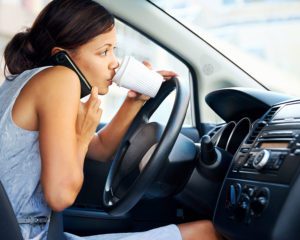Common Causes of Car Accidents

Investigating the cause of a car accident is an essential step in determining who was at fault for it. Unfortunately, nearly all car accidents are preventable, and the majority of accidents in the U.S. result from driver errors. Certain other factors cause some accidents, however, which can shape the process of proving liability. Many accidents result from more than one cause, so several people and entities may be involved in the case. A thorough investigation can help you determine whom to sue and assess any liability of your own.
If you find yourself in any of these situations, the best way to protect your rights is to schedule a free consultation with a car accident lawyer. A seasoned attorney can review the facts of your case, answer your questions, and provide sound legal guidance.
Drunk Driving
People make mistakes, and some of those mistakes can cause devastating injuries or even death to victims. Historically, the most publicized type of driver error has been drunk driving, which is responsible for more fatal crashes in the U.S. than any other cause. Anyone who consumes alcohol and then gets behind the wheel can expect to suffer from reduced reaction time and alertness as well as impaired vision and cognitive abilities. Drugged driving has received less publicity but has similar effects. Be aware that even if there is no charge to a driver with a DUI following a crash, you still might be able to hold them liable for your injuries. Civil cases use a much lesser standard of proof and contain different elements from criminal cases.
Distracted Driving
Studies in recent years have reported that distracted driving may have overtaken drunk driving as the leading cause of accidents overall. The most familiar form of distracted driving involves cell phone use behind the wheel, but this is not the only distraction. Drivers also can get distracted by using the GPS or radio, eating, or drinking behind the wheel, rubbernecking at roadside sights, or arguing with passengers, among other causes. Trying to handle different tasks while you are driving has an impact comparable to drunk driving, reducing reaction time and concentration. Hazards can arise suddenly on the road. The few seconds it takes to check your phone or grab a bite from a sandwich can make the difference between a safe evasive maneuver and a high-speed collision.
Other Types of Driver Errors
Another common but dangerous behavior behind the wheel is speeding. Many people speed routinely, confident in their ability to handle a car. Driving over the speed limit is especially true of young drivers, who are less experienced and thus more likely to cause a crash. Drivers sometimes do not adjust their speed to poor weather or road conditions, which may require driving at a rate below the posted limit.
Also, drivers need to leave enough room from the car in front of them to avoid a rear-end collision, a common type of car accident. Some people succumb to road rage behind the wheel or engage in forms of aggressive driving like tailgating, which can cause avoidable high-speed crashes.
Some people make the mistake of getting behind the wheel when they are too tired to drive. Fatigue plays a significant role in accidents involving trucks and other commercial vehicles, which operate according to strict deadlines. Ordinary drivers of passenger cars can make this mistake as well; however, overestimating their ability to stay awake and concentrate. Driver fatigue can make it harder to notice hazards or traffic control devices promptly.
Auto Defects
If a car contains a defect or a defective component, this may result in a malfunction that causes a crash. In this case, the manufacturer, and other entities in the chain of distribution of the vehicle or the component may be held liable. A victim could bring a product liability claim against them, which involves elements distinct from an ordinary car accident case.
Road Hazards
Inadequate maintenance of a road may cause a crash. Injured parties of a road hazard accident might consider suing the entity responsible for construction or maintenance, as well as the owner of the road. These cases may involve shortened deadlines and complex procedural rules. Similar to auto defect claims, they probably benefit from the assistance of an attorney.
Poor Weather
A crash involving snow, ice, heavy rain, fog, or other adverse weather conditions may seem unavoidable. In these instances, nobody was at fault, which is not necessarily true. If a driver failed to reduce their speed in poor weather conditions, for example, they might be found negligent and liable for a resulting crash. Or perhaps a vehicle safety component failed to function correctly in response to a weather hazard, which might mean that the fault lies on the manufacturer who could be sued. Until a thorough investigation of a crash, you should not assume that nobody was at fault.
Defective Car Parts
When defective car parts result in a car accident or an exacerbation of injuries arising out of an accident, there are many liability theories under which the accident victim may recover compensation. These theories require a plaintiff to show injuries and losses, a manufacturing defect, design defect, or failure to warn, and that the defect was the cause of the injury. Commonly used theories include strict liability, breach of express warranty, and breach of implied warranty.
In most car accident cases, to hold someone liable for injuries, a plaintiff must prove that the person’s or entity’s negligence caused his or her injuries. Concerning products, however, different rules have developed. It is costly to determine that a manufacturer making several lines of products was negligent concerning just one of those products.
The theory of strict liability requires a plaintiff to show that the vehicle or a particular car part was defective and that this caused his or her injuries or property damages. In contrast to lawsuits brought based on negligence, a plaintiff alleging strict liability will not have to show that a manufacturer’s actions fell below a particular standard of care. Some car parts that can trigger or worsen a car crash when they are defective include brakes, seatbelts, steering wheels, accelerators, and ignitions.
A plaintiff can also rely on a breach of express or implied warranty. Often, car parts or a vehicle come with a written warranty or guarantee. A defect or multiple defects breach that warranty. What if there is no written warranty? In many states, there are specific minimum standards that particular products must meet, even when the manufacturer or seller does not offer a warranty.
In some design defects cases, there may be an existing class action lawsuit that you can join. For example, specific models of cars have defective tires, and an experienced lawyer may already be prosecuting the manufacturer. Generally, when you enter a class-action lawsuit, you do not have to pay an upfront cost, but you reap the benefits.
It is usually a sound decision to join a class action in connection with defective car parts when your losses are minor. In those cases, you and your attorney may not feel it is worthwhile to spend the money litigating when the potential recovery is small. However, if you have suffered severe injuries, and the circumstances of your case are different from those of other class members, it is wiser to file your suit.
Defenses to Products Liability Claims
Most often, in product liability cases, the defendant contests the element of causation. The manufacturer or seller of the part will defend its position by arguing that it was a plaintiff’s negligent driving that caused the injuries, rather than the defective part. The defendant may also point to another vehicle’s careless driving. For example, a lightweight car may roll over, even if it is not defective. If another vehicle weaves into its lane, forcing the lightweight vehicle to make a sharp turn to avoid hitting that car. In that case, the manufacturer or seller may have a convincing argument that the other car’s driver is responsible.
Another common defense raised by a manufacturer or seller is that a plaintiff knew about the defect but continued to use the product. To prove this, the defendant may examine the condition of the car part or take your deposition. They may ask you questions about how you used the product to show you knew about the defect but used the car anyway.
Distracted Driving
Distracted driving is driving while paying attention to something other than driving. Some activities that commonly distract people from the road include texting while driving or trying to find driving directions. Eating, getting into an argument with a passenger, putting on makeup, or trying to find a station on the radio. The National Highway Traffic Safety Administration found that in 2008 distracted driving caused 20% of all motor vehicle accidents.
A distracted driver’s inattention to the road may be negligent. You can show the legal theory of negligence if the plaintiff can prove the duty of the defendant, a breach of the responsibility, actual and proximate causation, and actual damages. In general, driving requires a driver’s full attention. Drivers need to be able to respond to unpredictable events, such as an animal running onto the road or a car suddenly braking. They also need to respond to traffic signals. Paying attention to activities other than driving is likely to be a breach of the duty to use reasonable care while driving.
Some states follow the doctrine of negligence, per se. Generally, this doctrine permits an inference of negligence by the defendant if a plaintiff can show that the defendant violated a safety statute or the violation caused an accident. The plaintiff belonged to the class of people intended to be protected by the safety statute.
If someone is focused on choosing music and runs a red light, causing a side-impact collision with another driver, there may be a finding of negligence per se. In such a case, the defendant violated a traffic safety law, it caused an accident, and the other driver is someone whom the traffic safety law protects. The doctrine of negligence per se can make it easier to hold a negligent individual responsible for a car crash. In states that do not recognize neglect, evidence that the defendant ran a red light while trying to select music will be very persuasive in showing a breach of duty.
What To Do After An Accident
While you are at the scene, you should take photographs not only of the damages to your car, but also skid marks or any debris in the road. You should report the matter to your insurance provider. If you believe the other driver was at fault and you were injured, you should also contact and consult a personal injury attorney.
Most people want to apologize when they know they should have been paying attention. However, if you are in an accident that you believe was caused by your distracted driving, you should not admit fault or offer explanations to the other driver. Any admissions of wrongdoing you make after an accident can be used against you either by the other driver’s insurer or in a courtroom.
In many cases, more than one driver was at fault, and more than one driver was distracted. In particularly complex cases, it may be necessary for the parties to retain an accident reconstruction specialist or forensic engineer to determine the actual and proximate causes of the accident.
Schedule a Free Case Review with a Car Accident Lawyer in West Palm Beach
To discuss your case with a personal injury attorney in West Palm Beach, contact Weston & Pape. Our lawyers offer free consultations and accept car accident claims on a contingency fee basis. Call our office at 561-299-3999 or send us a message on our Contact Page to set up a case evaluation.

 Call Us Today
- It's Free
Call Us Today
- It's Free